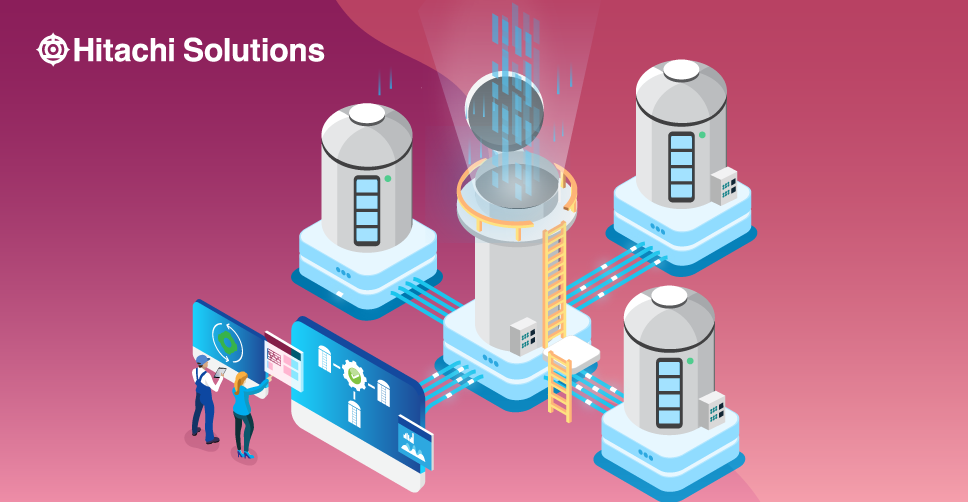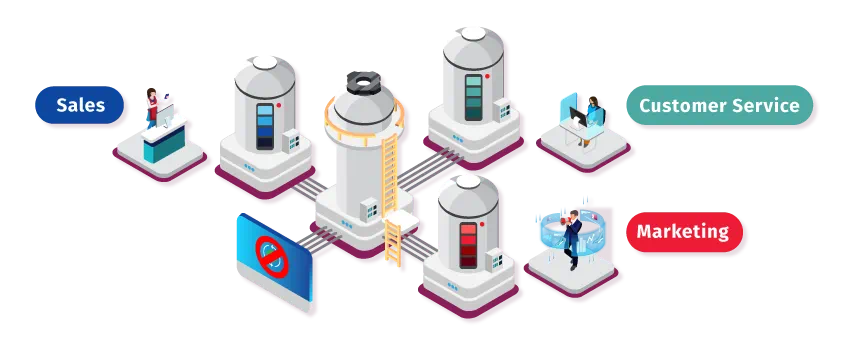

Data Modernization
Accelerate your business with a modern data platform
Watch the On-Demand WebinarHave you ever spent a considerable amount of time trying to track down a piece a data? Is your organization dealing with time-consuming customer service experiences because the right information isn’t easily accessible?
If you work with data (and who doesn’t?), you know how important information — and more specifically, easily accessible information — can be for any type of business, regardless of industry. Data is the driving force in most organizations and companies, impacting everything from customer relationships and experiences to marketing strategies and new product development. In order words, data is king.
According to a Forbes article, 49% of people surveyed say that data analytics helps them make better decisions; 16% say it enables key strategic initiatives; and 10% say it helps improve relationships with customers and business partners. The bottom line: Data is essential to structure, growth, and opportunity.
But what happens when that data isn’t readily available or shared easily between departments, and how can businesses and organizations overcome this hurdle to better position themselves for opportunity and growth?
In this blog post, we’ll discuss the challenges of data silos, why they could be hurting your business, and the solutions you can implement to move toward optimizing your organization by getting the most out of your data; to move in the right direction so that you can maximize data to optimize your organization.
What Are Data Silos?
A data silo refers to information or data within a business or organization that’s isolated and often inaccessible; this can include information at every level, even raw data. The information can be business unit-focused, meaning, for example, a company’s marketing, sales, and customer service departments likely have information that should be shared but isn’t.

In some cases, information may seem close by and easily attainable, but in reality it’s siloed in its own system, as illustrated by the graphic above.
In other scenarios, data silos may result from systems as opposed to business units or departments. Let’s look at a real-world example:
You work in the finance department for a large retail supplier. In order complete a full financial analysis, you need a variety of data and information from different parts of the company. For example, you need access to the time-keeping system in order to see the hours of warehouse employees. You may also need access to a human resources system to verify records, though only a few people have access to that information. Lastly, you’ll need data from the warehouse management system to look at the supply chain.
In this scenario, all of those components likely have their own system, but the information and data may not be easily accessible.
Another common data silo scenario stems from workforce optimization. A company or organization may employ multiple systems with different information, such as upcoming projects, project statuses, physical locations, employee information, and more. But since this information is spread across multiple systems, it may be difficult and time-consuming to track down.
4 Main Factors That Can Contribute to Data Silos
1. Workplace culture
Employees may keep data from each other due for a variety of culture-related reasons. For example, they may feel as if sharing data may threaten their job security, or they want to hold on to information as a form of competition with others. Even hostile or poor relationships between teams or departments may cause employees to refrain from sharing information instead of working as a team.
2. Organizational structure
If you’re an employee whose single focus is within one department, data silos may not be a liability. But they can be a challenge for larger organizations that have multiple layers of management, leadership, and staff — or for employees whose job responsibilities span multiple departments.
3. Technology
Technology has arguably improved every business or organization in some capacity, but it’s certainly a factor that can contribute to siloed data. A recent Forbes article estimates that $3.46 trillion will be spent on IT products and services in 2020, which means that businesses and organizations are understandably investing in technology. But the reality is that technology is only as good as how it’s being used. Businesses and organizations may have applications that cannot be cross-referenced, or departments simply may not have access to the data they need.
4. Funding
In some cases, funding (or lack thereof) can contribute to data silos. Businesses and organizations may think change is costly, or they don’t see the return on investment of moving information out of its silo.
Why Are Data Silos Bad?
1. They inhibit productivity Inhibited productivity
It makes sense that if employees are constantly spending time looking for data, they aren’t being as productive as possible, which can significantly slow the pace of your company. Employees may also spend time trying to figure out which data silo has the most current information, which could mean a duplication of effort.
2. They prevent you from seeing the big picture
Data silos can preclude you from seeing the complete, comprehensive view of your business or organization. If you’re looking for specific information, you’ll have to examine each data silo separately, which can slow down a project or jeopardize a deadline.
3. They can lead to a negative customer experience
HubSpot estimates that $1.6 trillion is lost annually due to poor customer service. Clients have lost thousands of man hours trying to manually integrate siloed data into a single story/view.
4. The contents of each silo may vary
In some situations, silos may house duplicate data, so how do you determine which is correct and offers the most up-to-date information? When you’re looking for data, you want to make sure it’s the right data. If the contents of silos overlap or vary, you could omit or overlook a key piece of information.
What Are Data Silos Costing Your Organization?
This will vary depending on the size of your organization. Smaller businesses that have siloed data can circumvent this challenge more easily since there are fewer departments and employees through which to navigate. The bigger your business or organization, however, the more of a challenge it is to manage isolated data and information.
Data silos can lead to inhibited productivity, a slower pace, and overall inefficiency within an organization. They can also lead to a lack of information sharing and the inability of a business to make informed decisions by not having the right data available.
“Internal organizational silos can lead to inconsistent and undefined processes, disparate or missing data sources and systems, and misalignment across the supply chain,” according to Forbes. “These challenges can drive up costs and negatively impact accuracy and quality, ultimately impacting the health of the company’s bottom line.”
Microsoft Azure Synapse Analytics: Your Solution for Data Silos
The right data silo solution will unify your data and systems, resulting in organizational efficiency and consistency. By fully integrating all your individual data sources, you will save time, money, and ensure that you are changing data culture and management for the better.
Microsoft Azure Synapse is an analytics service that delivers insights from all of your data — quickly and efficiently. It does this by bringing enterprise data warehousing and big data analytics together, giving you the freedom to query data on your own terms. This all-in-one solution optimizes query performance and provides a unified analytics experience that includes Power BI and machine learning.
Modernize Data Management with Hitachi Solutions
Here at Hitachi, we are well positioned to provide organizations and businesses a superior solution to breaking down data silos. We can help you collect, consume, transform, and visualize data with a modern and scalable data solution that enables self-service analytics.
Microsoft Azure provides a unified workspace for all things data, including preparation, management, warehousing, big data, and AI tasks in a single user experience.
Our specialists are ready and waiting to help you manage your data, so get in touch today to get started.


